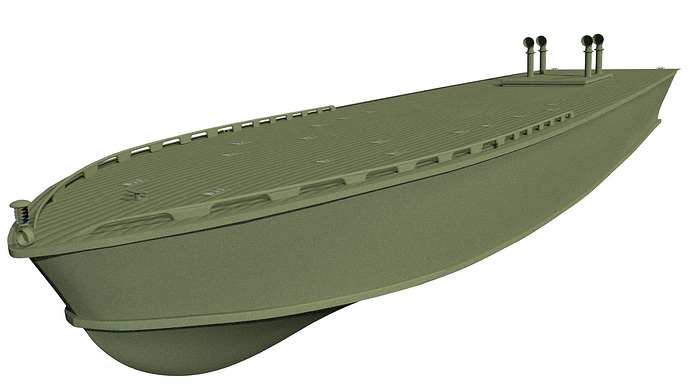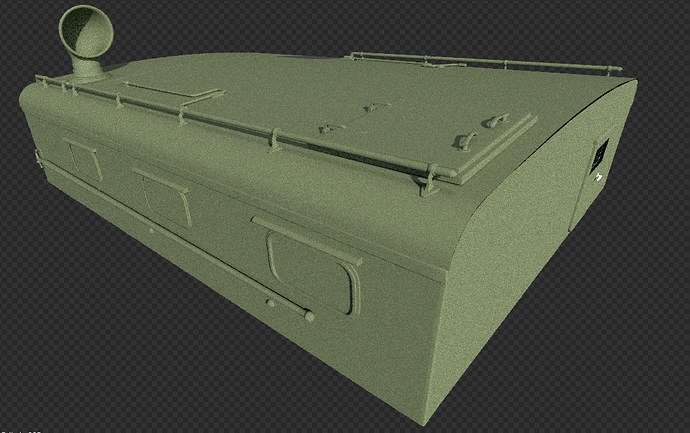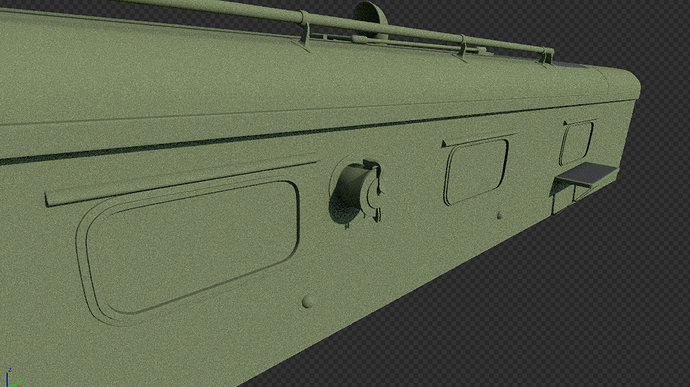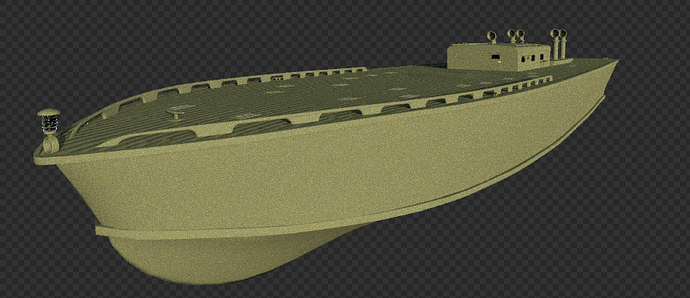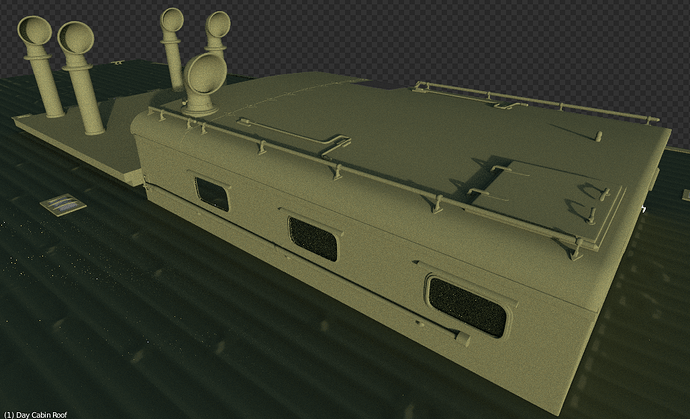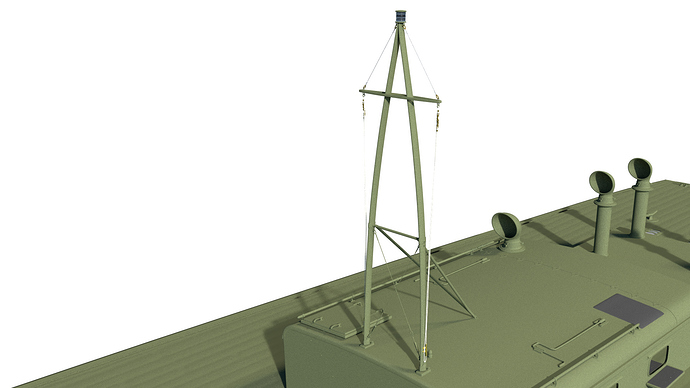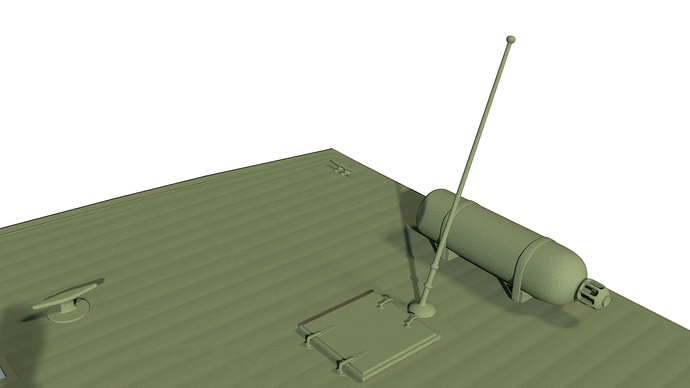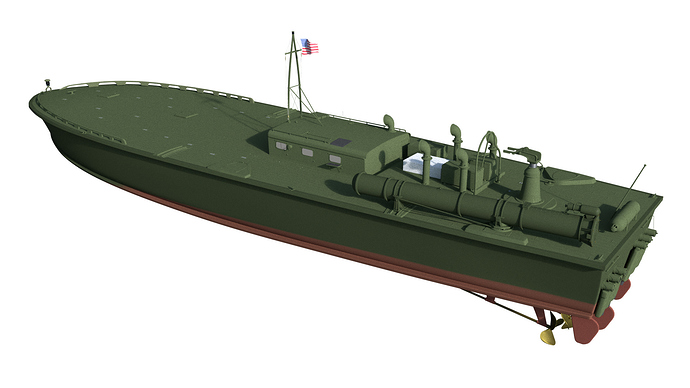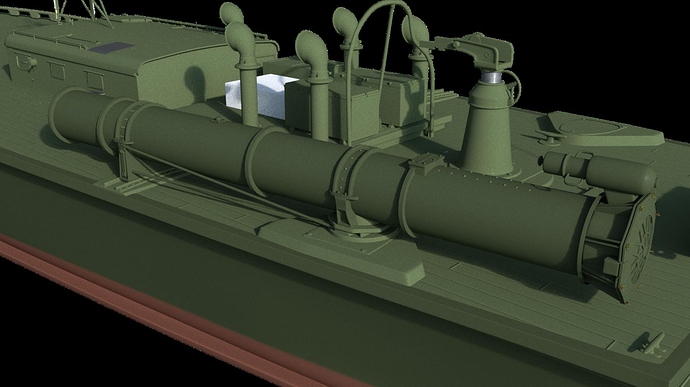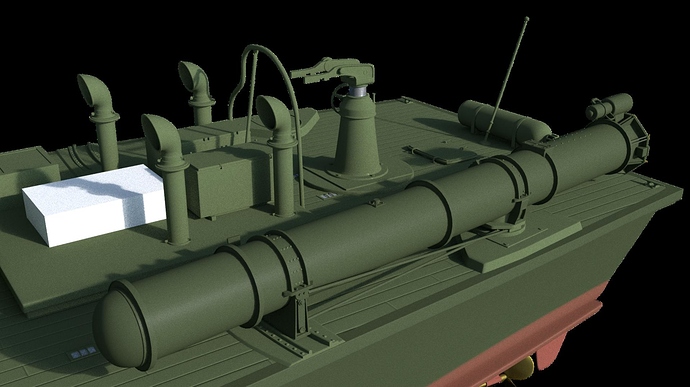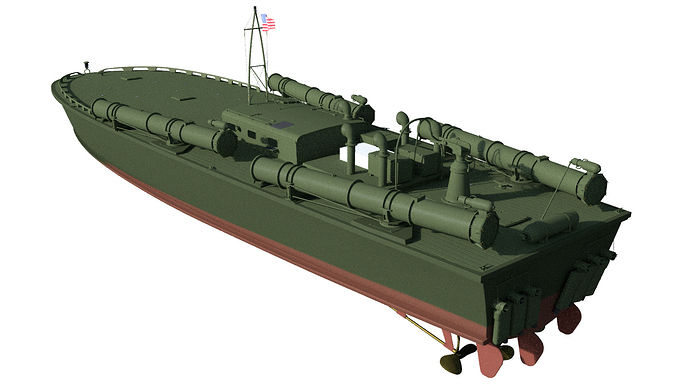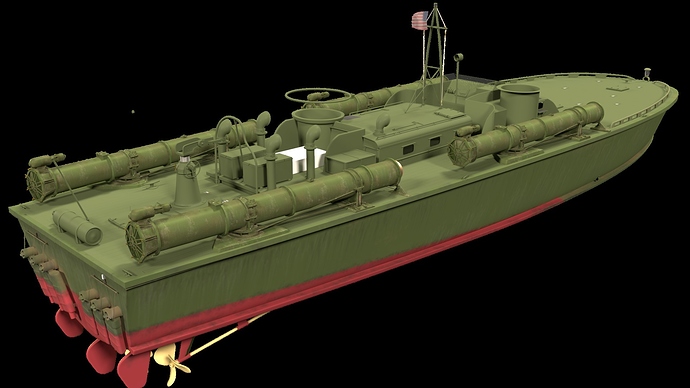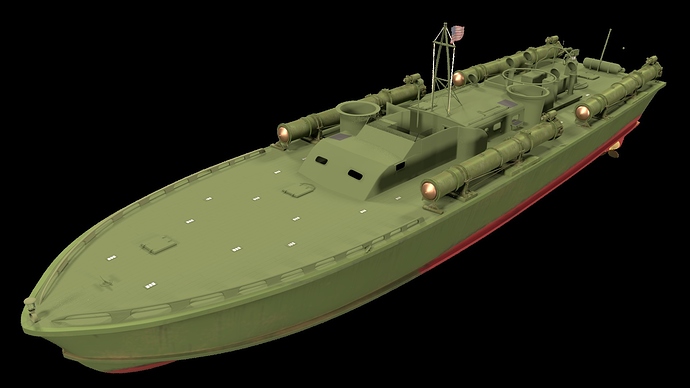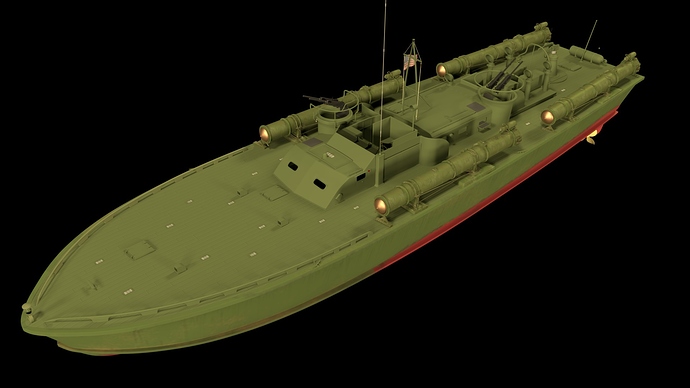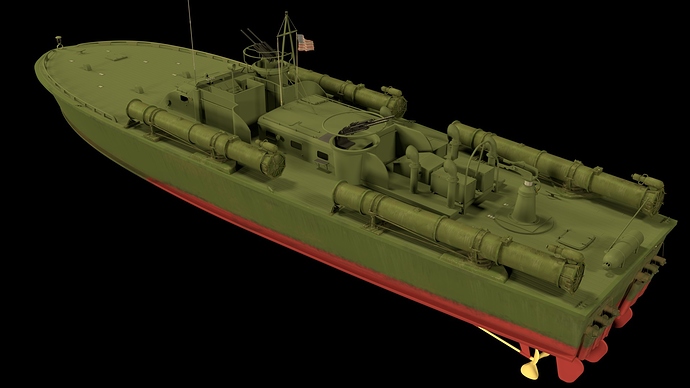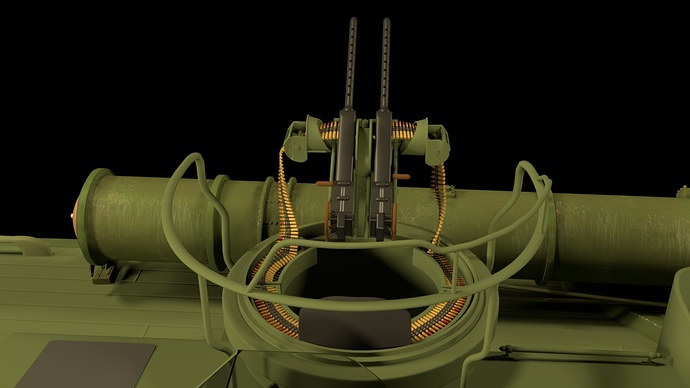This is an update on my WIP for PT-109. When finished, it will be available on Blend Swap as CC-0.
- While it may not seem a lot has changed from my previous post, there big pieces were essentially blocked and now comes all the small details.
- Deck vents on the forward bow added
- The controls on the bridge are blocked in but do not have textures
- The armor around the bridge that was added after PT-109 was built has added. The armor essentially protects the captain from shrapnel and bullets while manning the helm.
- The forward turret for the twin .50 cal machineguns has been modified and the “limit stops” and supporting structure added. The limit stops are the oddly shaped metal frame around the turret. Its purpose is to limit the depression of the machineguns so that they could not damage the boat / crew. So if you visualize the turret rotating while the gunner was firing, the limit stop would force the guns to fire safely above parts of the boat. Note, the entire turret did not rotate but the inner part did. As it turned the limit stop caused the guns to elevate. The guns could rotate vertically to 90 degrees. Also note that the inside of the turret has not yet been modeled. That will include the ammunition trays and the specialized mounts for the machineguns. Both have a lot of detail.
- The machine guns are from my B-17 model on Blend Swap. They are about 90% compatible with the Navy configuration for the PT-103 class of PT boats, so I need to make some modifications. For example, the Air Force .50 cal machinegun on the B-17 are as you see them in the images for this post. But because the PT boat had a much greater degree of movement, the firing handles where much larger and curved so the gunner could point the guns straight up and still be able to control and fire the guns. You’ll see what I mean in the final version.
- Added the radio antenna.
- Added the engine room deck hatch housing which is located just aft of the Day Cabin (behind the bridge).
- Added the binnacle and vents to the Chart House (forward of the bridge.
Major additions still pending:
- The details of the forward and aft .50 cal turrets.
- The 20 mm cannon. The mount on the aft portion is complete but the cannon has not yet been modeled.
- The search light on the bridge
- Some small details such as wiring, windshield braces for the bridge, the three ammunition hatches (one for each turret and one on the port side of the Chart House.
- Texturing: this is going to be both a headache and a challenge.
A couple of historical notes.
First, photographs, drawings, and blueprints of the PT-103 class boats (which included PT-109) are in poor condition, and/or not to scale, and/or are not complete. Therefore, much of the modeling of PT-109 is guess work based on all of the available information and data.
Second, there is a lot of disagreement about the configuration of PT-109 on the Internet forums dedicated to PT boats. For example, it is documented that PT-109 had two depth charges on the bow. Also documented is that during heavy seas, a forward torpedo was ejected and tore off one of the depth charges. It is unknown if PT-109 repaired that damage or removed the depth charges. Another example is what the deck looked like. When the PT-103 class boats were originally built, the decks were planked and painted with a non-skid paint. However, there is at least on photograph of a PT-103 class boat that suggest there is no planking. I assume this may be because of additional coats of non-skid paint made it appear to be a smooth deck or there may have been a modification in the field. Models and paintings of PT-109 show both a deck with planking and a deck without planking which means no one really knows. I opted to show a deck with planking because it’s possible that PT-109 had a planked deck and because it added interest to the model.
Next, there are no photographs of PT-109’s forward hull. Some PT-boats had their number painted on the hull, the front and side of the chart house, and the front of the 20 mm cannon. Most, however did not have a hull number. So my model will not have a number on the hull when completed.
You know, there is a time during modeling when you think you are not progressing. But then when I look back at my early attempts to model PT-109, I realize that I have actually progressed a lot in my modeling and texturing.
So for all of you out there who are intimidated by 3D modeling, hang in there. The best I can possibly give is to pick a model/theme that is beyond your current capabilities and model it. You will learn a lot about modeling techniques. Every time I run into a problem, I Google for a solution and I get lots of good information. Some is better than others but they mostly get the job done.
For the experts out there, this would be a simple model to create. But for me, it has been a difficult challenge. So remember to progress from a difficult challenge to expert requires a lot of practice.
Never give up. Always progress.
One last note. Except for the textures on the hull and torpedo tubes–which are just an experiment–everything else is a texture place holder until I decide how I want to texture every grouped piece.
